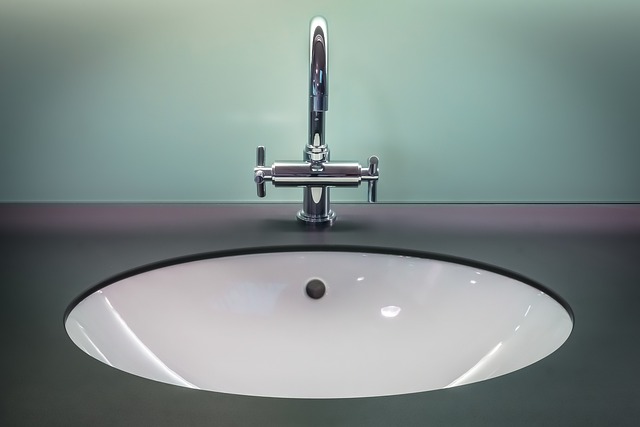Understanding Bathroom Appliances and How They Work
Bathroom appliances are everyday tools that make daily routines easier and more comfortable. From showers and sinks to mirrors and lights, each plays an important role in how people start and end their day. This article explains the parts, how they function, and the different styles people use in their homes. Readers will learn how these appliances have changed over time and discover the many ways they add convenience and comfort to modern living.

What are the essential bathroom appliances?
Essential bathroom appliances form the foundation of any functional bathroom. These typically include toilets, sinks, showers, and bathtubs. Toilets are designed for waste disposal and typically operate using a flush mechanism that relies on gravity and water pressure. Sinks provide a dedicated space for hand washing and personal hygiene tasks, often featuring faucets with adjustable water flow and temperature controls. Showers and bathtubs offer bathing facilities, with showers using pressurized water delivery systems and bathtubs providing a vessel for soaking and relaxation.
How do modern bathroom fixtures enhance functionality?
Modern bathroom fixtures have evolved to offer enhanced functionality and improved user experience. Smart toilets, for instance, may include features like automatic flushing, heated seats, and built-in bidets. Advanced shower systems can provide multiple water outlets, adjustable pressure settings, and even programmable temperature controls. Faucets with motion sensors or touch-free operation not only add convenience but also contribute to water conservation efforts. These modern fixtures often incorporate technology to optimize water usage and energy efficiency, making them both practical and environmentally friendly choices for homeowners.
What types of bathroom appliances are available for specialized needs?
Specialized bathroom appliances cater to specific needs and preferences, enhancing the overall bathroom experience. For individuals with mobility challenges, walk-in tubs and roll-in showers provide safe and accessible bathing options. Bathroom ventilation systems, including exhaust fans and dehumidifiers, help manage moisture levels and improve air quality. Towel warmers offer the luxury of heated towels while also serving as additional heating sources in colder climates. For those seeking spa-like experiences at home, jetted tubs and steam showers provide relaxation and therapeutic benefits.
How do bathroom appliances work together as a system?
Bathroom appliances work together as an interconnected system to provide a seamless user experience. The plumbing network serves as the backbone, connecting water supply lines to various fixtures and directing waste water to the drainage system. Ventilation systems work in tandem with moisture-producing appliances like showers and tubs to prevent mold growth and maintain air quality. In modern bathrooms, smart home technology may integrate various appliances, allowing for centralized control of lighting, temperature, and even water usage through smartphone apps or voice commands.
What maintenance is required for bathroom appliances?
Proper maintenance is essential for ensuring the longevity and optimal performance of bathroom appliances. Regular cleaning of all fixtures, including toilets, sinks, and showers, helps prevent the buildup of soap scum, mineral deposits, and mildew. Checking and replacing seals, gaskets, and faucet aerators periodically can prevent leaks and improve water efficiency. For more complex appliances like jetted tubs or smart toilets, following manufacturer-recommended maintenance schedules is crucial. It’s also important to address any plumbing issues promptly to avoid water damage and ensure the proper functioning of all connected appliances.
How can one choose the right bathroom appliances for their space?
Selecting the right bathroom appliances requires careful consideration of several factors. Space constraints play a significant role, as the size and layout of the bathroom will determine which appliances can be accommodated. Water efficiency is another important consideration, with many homeowners opting for low-flow toilets and water-saving showerheads to reduce consumption. Style and design preferences should also be taken into account to ensure a cohesive look throughout the bathroom. Additionally, budget considerations will influence the choice between basic models and more advanced, feature-rich options.
| Appliance Type | Average Cost Range | Key Features |
|---|---|---|
| Standard Toilet | $100 - $500 | Basic flushing mechanism, various bowl shapes |
| Smart Toilet | $1,000 - $7,000 | Automatic flushing, heated seat, bidet functions |
| Basic Sink | $50 - $300 | Single or double basin, various material options |
| Shower System | $200 - $2,000+ | Multiple spray settings, adjustable pressure |
| Standard Bathtub | $200 - $2,000 | Various sizes and materials (acrylic, cast iron) |
| Walk-in Tub | $2,000 - $10,000 | Safety features, hydrotherapy options |
Prices, rates, or cost estimates mentioned in this article are based on the latest available information but may change over time. Independent research is advised before making financial decisions.
When selecting bathroom appliances, it’s essential to balance functionality, aesthetics, and budget. By understanding how these appliances work and their various features, homeowners can make informed decisions that result in a bathroom that meets their needs and enhances their daily routines. Whether opting for basic fixtures or high-tech solutions, the right combination of bathroom appliances can create a space that is both practical and enjoyable to use.




